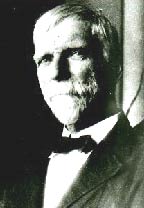
Bryology is the branch of botany concerned with the scientific study of bryophytes. Bryologists are people who have an active interest in observing, recording, classifying or researching bryophytes. The field is often studied along with lichenology due to the similar appearance and ecological niche of the two organisms, even though bryophytes and lichens are not classified in the same kingdom.

Schistostega pennata, also called goblin gold, Dragon's gold,luminous moss or luminescent moss, is a haplolepideous moss (Dicranidae) known for its glowing appearance in dark places. It is the only member of the family Schistostegaceae.

Tetraphidaceae is a family of mosses. It includes only the two genera Tetraphis and Tetrodontium, each with two species. The defining feature of the family is the 4-toothed peristome.
Ilma Grace Stone, née Balfe, was an Australian botanist who specialised in bryology. She was an author, collector, and researcher of Australian mosses, a subject on which she lectured and wrote.

James Eustace Bagnall ALS was an English naturalist with a particular interest in botany, especially bryology. He was the author of the first Flora of Warwickshire (VC38) in 1891. A noted bryologist, he wrote the Handbook of Mosses in the Young Collector Series, various editions of which were published between 1886 and 1910.

Elizabeth Gertrude Britton was an American botanist, bryologist, and educator. She and her husband, Nathaniel Lord Britton played a significant role in the fundraising and creation of the New York Botanical Garden. She was a co-founder of the predecessor to the American Bryological and Lichenological Society. She was an activist for protection of wildflowers, inspiring local chapter activities and the passage of legislation. Elizabeth Britton made major contributions to the literature of mosses, publishing 170 papers in that field.
The British Bryological Society is an academic society dedicated to bryology, which encourages the study of bryophytes. It publishes the peer-reviewed Journal of Bryology.

Thomas Wrench Naylor Beckett was an English-born coffee and tea planter in Ceylon and a noted botanist and bryologist, who collected specimens there and in the north-western Himalaya between 1882 and c.1900. He did not publish any account of the mosses he collected while in Ceylon – many of his specimens though are recorded in Max Fleischer's "Musci der Flora von Buitenzorg". He emigrated to New Zealand where he also collected. His main pteridophyte collection is at World Museum Liverpool. His bryophyte material at Kew was transferred to the British Museum of Natural History in about 1961 in terms of the Morton Agreement. The University of Canterbury and Christchurch houses some 12,000 of his specimens. Beckett was one of three amateur bryologists active in Christchurch, the other two being Robert Brown (1824–1906) and Thomas George Wright (1831–1914).
A.L. Kathleen King (1893–1978) was an Irish botanist and one of Ireland's leading field bryologists.

George Elwood Nichols (1882–1939) was a botanist, bryologist, algologist and ecologist, one of the founders of the Ecological Society of America. The standard author abbreviation Nichols is used to indicate this person as the author when citing a botanical name.

William Campbell Steere (1907–1989) was an American botanist known as an expert on bryophytes, especially arctic and tropical American species. The standard author abbreviation Steere is used to indicate this person as the author when citing a botanical name.
Inez Maria Haring was an American botanist and plant collector, best known for her work in bryology as the Assistant Honorary Curator of Mosses at the New York Botanical Garden beginning in 1945.

Margaret Sibella Brown, herein referred to as "Brown", was a Canadian bryologist specializing in mosses and liverworts native to Nova Scotia.
Lewis Edward Anderson was an American botanist dedicated to the study of mosses, and was a renowned expert on the North American bryoflora. The standard author abbreviation L.E.Anderson is used to indicate this person as the author when citing a botanical name.

Alexander William Evans was a botanist, bryologist, and mycologist that specialized in the flora of Connecticut.

Robert Statham Williams was an American bryologist who specialized in the mosses of the Yukon and South America. The standard author abbreviation R.S.Williams is used to indicate this person as the author when citing a botanical name.
Geneva Sayre was a bryologist and bibliographer. She "pioneered bibliographical and historical bryology, a new field in the study, evaluation, and organization of the literature of bryology."
Albert LeRoy Andrews (1878–1961) was a professor of Germanic philology and an avocational bryologist, known as "one of the world’s foremost bryologists and the American authority on Sphagnaceae." From 1922 to 1923 he was the president of the Sullivant Moss Society, renamed in 1970 the American Bryological and Lichenological Society.
Eric Vernon Watson (1914-1999) was a British bryologist.











